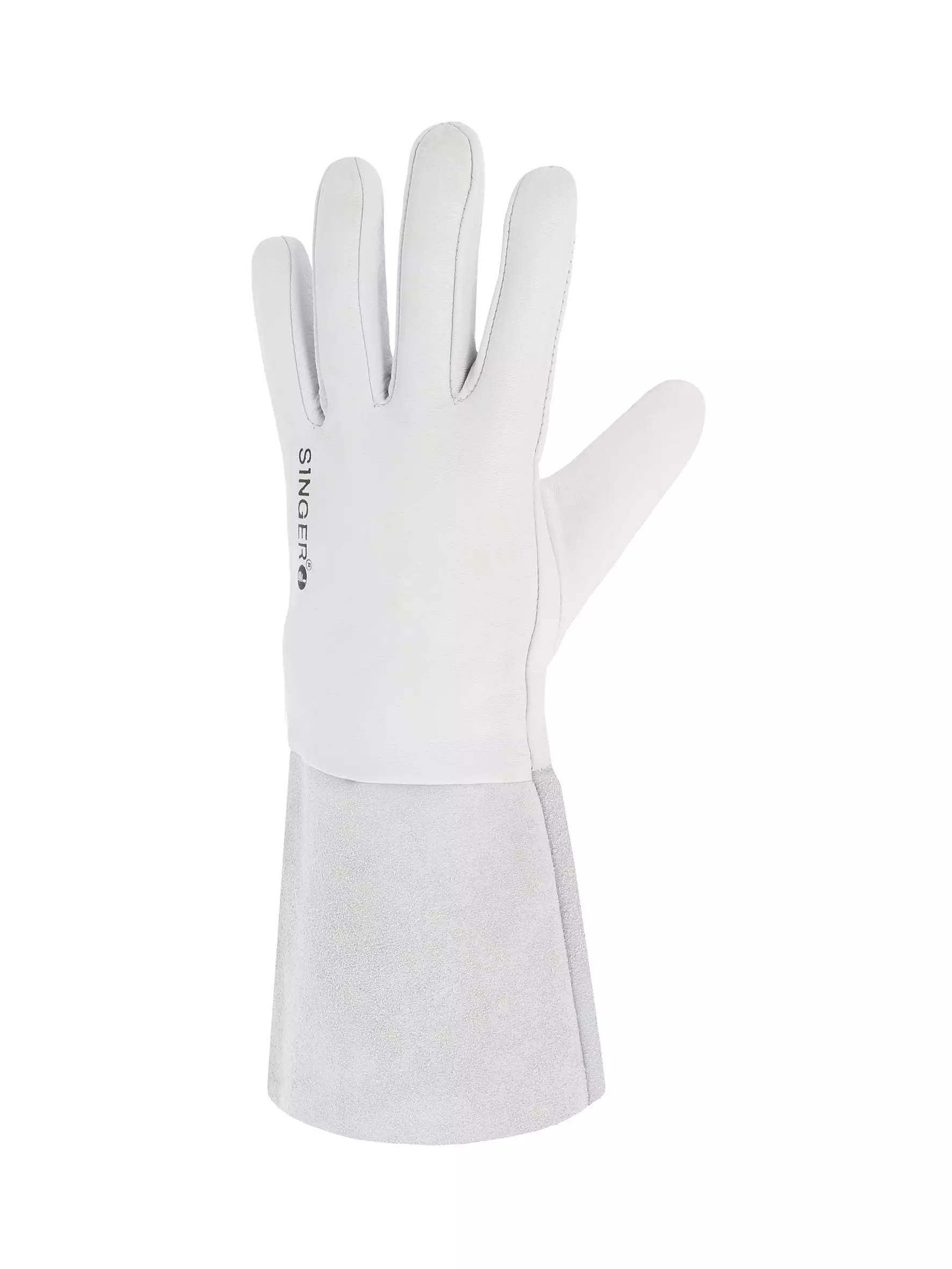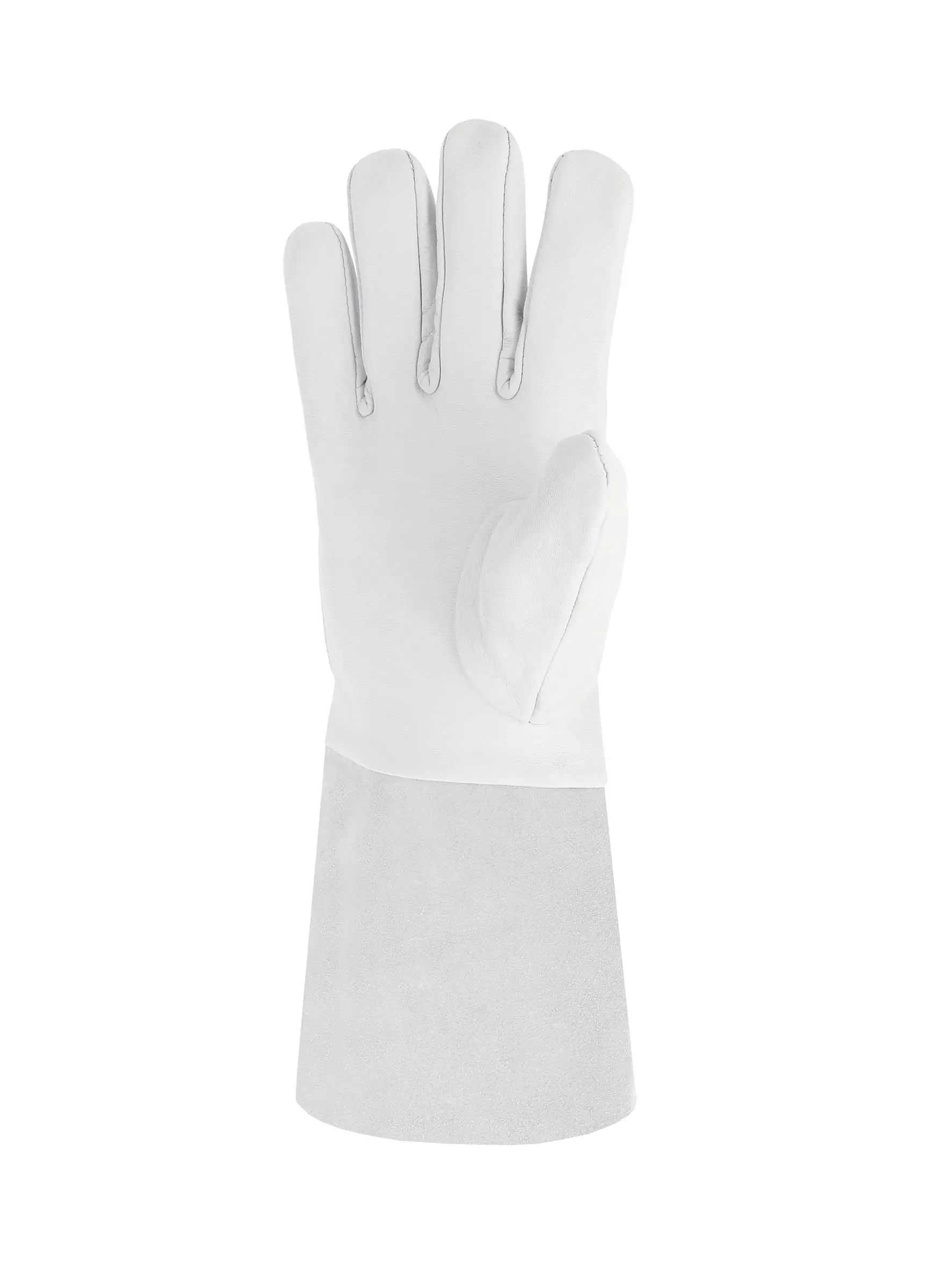This protective glove features premium full grain lambskin leather combined with a 14 cm cowhide cuff for optimal hand and forearm protection. The fine lambskin construction provides exceptional dexterity and tactile sensitivity, while the urban-style assembly perfectly conforms to hand shape for enhanced comfort during precision tasks. Machine-cut components ensure consistent dimensions and sizing across all gloves, making them ideal for applications requiring fine motor control.
Product Features:
- Full grain lambskin leather construction for superior tactile sensitivity
- 14 cm cowhide cuff provides forearm protection
- Urban-style assembly with mounted thumb and finger forks
- Machine-cut components ensure dimensional consistency
- Exceptional dexterity for precision handling tasks
Technical Details:
- Leather band sewn between fingers for improved fit
- Urban assembly technique enhances hand conformity
- Protective glove classification
Recommended Applications:
- Light handling in dry environments
- Fine precision work
- Tasks requiring ergonomic hand protection
Standards:
- EN 388:2121X certification for mechanical protection
- EN 407-2B:411142 for thermal protection
This protective glove features premium full grain lambskin leather combined with a 14 cm cowhide cuff for optimal hand and forearm protection. The fine lambskin construction provides exceptional dexterity and tactile sensitivity, while the urban-style assembly perfectly conforms to hand shape for enhanced comfort during precision tasks. Machine-cut components ensure consistent dimensions and sizing across all gloves, making them ideal for applications requiring fine motor control.
Product Features:
- Full grain lambskin leather construction for superior tactile sensitivity
- 14 cm cowhide cuff provides forearm protection
- Urban-style assembly with mounted thumb and finger forks
- Machine-cut components ensure dimensional consistency
- Exceptional dexterity for precision handling tasks
Technical Details:
- Leather band sewn between fingers for improved fit
- Urban assembly technique enhances hand conformity
- Protective glove classification
Recommended Applications:
- Light handling in dry environments
- Fine precision work
- Tasks requiring ergonomic hand protection
Standards:
- EN 388:2121X certification for mechanical protection
- EN 407-2B:411142 for thermal protection
This protective glove features premium full grain lambskin leather combined with a 14 cm cowhide cuff for optimal hand and forearm protection. The fine lambskin construction provides exceptional dexterity and tactile sensitivity, while the urban-style assembly perfectly conforms to hand shape for enhanced comfort during precision tasks. Machine-cut components ensure consistent dimensions and sizing across all gloves, making them ideal for applications requiring fine motor control.
Product Features:
- Full grain lambskin leather construction for superior tactile sensitivity
- 14 cm cowhide cuff provides forearm protection
- Urban-style assembly with mounted thumb and finger forks
- Machine-cut components ensure dimensional consistency
- Exceptional dexterity for precision handling tasks
Technical Details:
- Leather band sewn between fingers for improved fit
- Urban assembly technique enhances hand conformity
- Protective glove classification
Recommended Applications:
- Light handling in dry environments
- Fine precision work
- Tasks requiring ergonomic hand protection
Standards:
- EN 388:2121X certification for mechanical protection
- EN 407-2B:411142 for thermal protection

